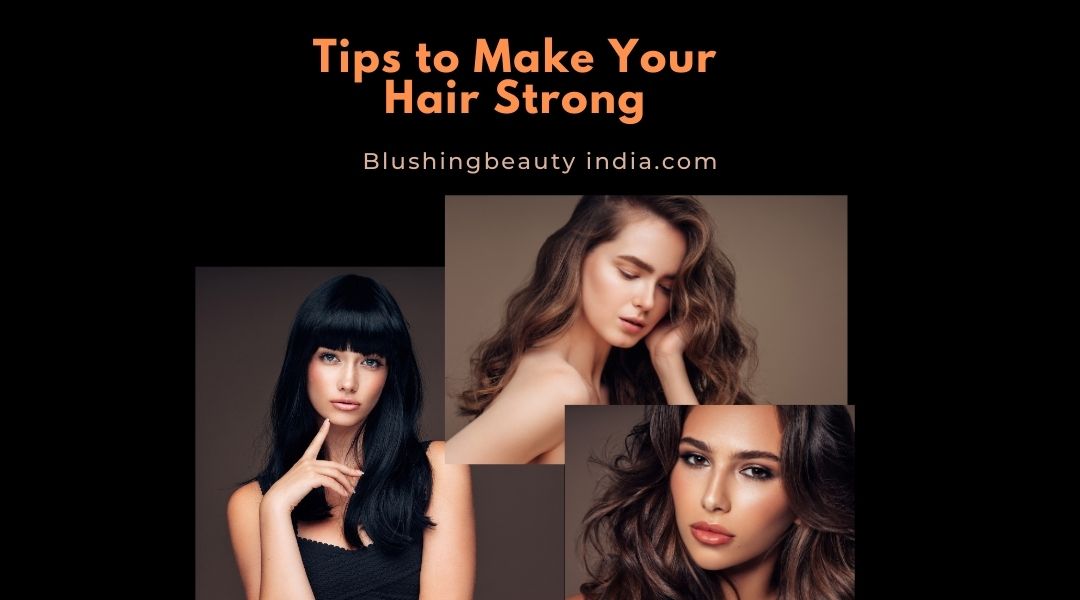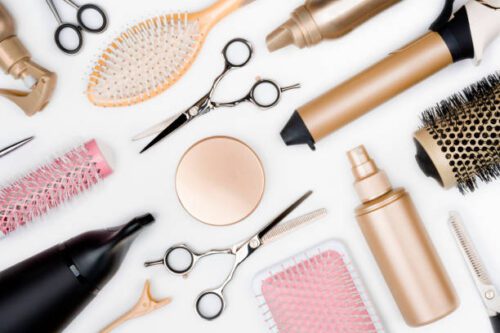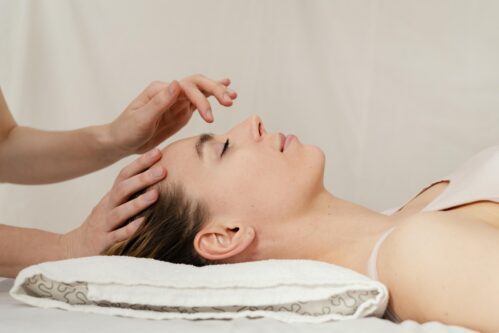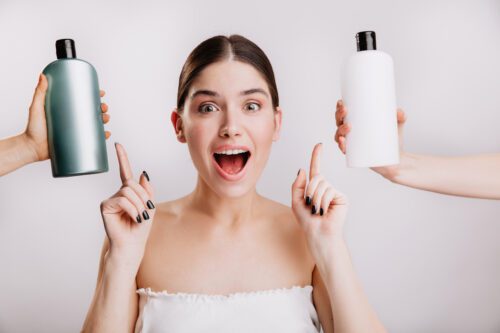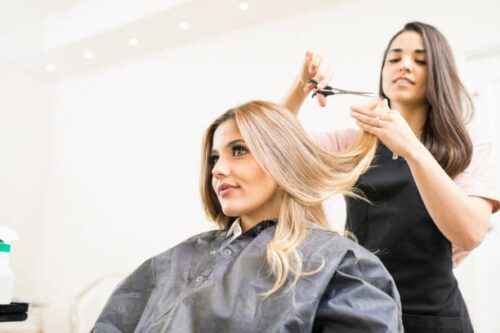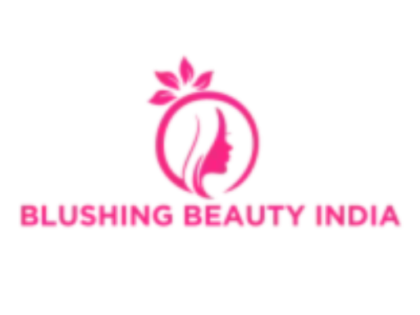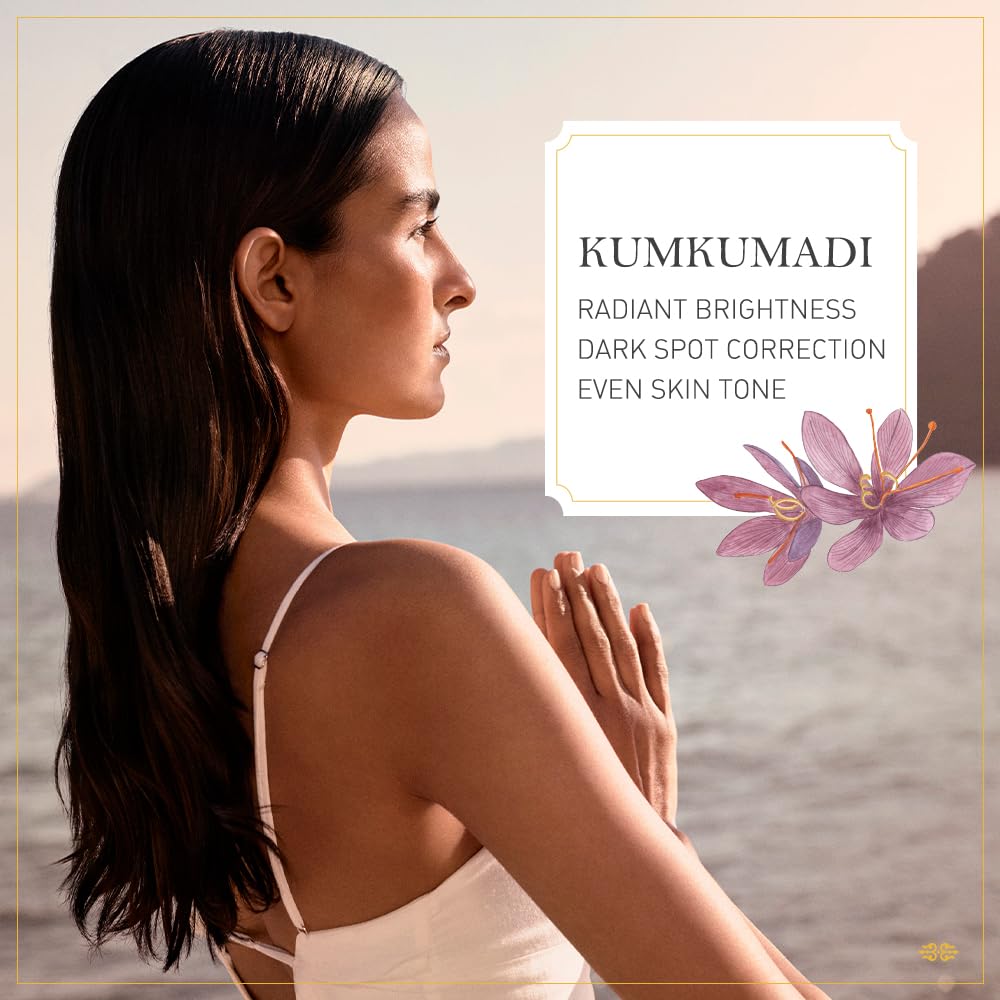Make Your Hair Strong Are you tired of dealing with weak, brittle hair that seems to break easily? Don’t worry, because we have got you covered! In this article, we will share ten expert tips to help you make your hair strong, healthy, and lustrous.
Say goodbye to hair fall and hello to gorgeous locks! So, let’s dive right in and discover the secrets to strong and beautiful hair. Having strong hair not only enhances your appearance but also indicates good overall health.
Weak hair is prone to breakage and hair fall can be caused by various factors such as poor nutrition, dehydration, excessive heat styling, and harsh chemicals. By following these ten tips, you can significantly improve the strength and vitality of your hair.
1. Proper nutrition for hair strength
The health and strength of our hair are closely linked to our nutritional intake. Just like any other part of our body, hair requires certain nutrients to grow strong and vibrant. By adopting a diet rich in essential vitamins, minerals, and proteins, we can significantly improve the strength and resilience of our hair.
Essential Nutrients for Strong and Healthy Hair
1. Protein
Protein is the building block of hair strands. It plays a vital role in strengthening the hair follicles and promoting hair growth. Incorporate lean sources of protein such as chicken, fish, lean meats, beans, and lentils into your diet to ensure an adequate protein intake for hair strength.
2 Omega-3 fatty acids
Omega-3 fatty acids are essential for scalp health and hair growth. They help in nourishing the hair follicles, reducing inflammation, and improving overall hair strength. Include fatty fish like salmon, mackerel, and sardines, as well as chia seeds and walnuts, in your diet to boost your omega-3 intake.
3 Biotin
Biotin, also known as vitamin B7, is a crucial nutrient for healthy hair growth. It aids in the production of keratin, the protein that makes up the structure of hair strands. Foods rich in biotin include eggs, almonds, sweet potatoes, and avocados.
4 Vitamin E
Vitamin E is an antioxidant that promotes hair growth and prevents oxidative stress. It helps in maintaining a healthy scalp, which is essential for strong hair. Incorporate foods like sunflower seeds, almonds, spinach, and broccoli into your diet to ensure an adequate intake of vitamin E.
5. Iron
Iron deficiency can lead to hair loss and brittle hair. It is essential for carrying oxygen to the hair follicles, promoting healthy growth. Include iron-rich foods such as lean red meat, spinach, lentils, and tofu in your meals to support strong and healthy hair.
Foods for Hair Strength
6. Eggs
Eggs are an excellent source of protein and biotin, both of which are essential for strong and healthy hair. They also contain other hair-friendly nutrients such as zinc and selenium. Incorporate eggs into your diet by enjoying them boiled, scrambled, or in omelettes for
2. Hydration: Drink Up for Healthy Hair
When it comes to maintaining strong and healthy hair, hydration is key. Just as our bodies need water to function properly, our hair needs hydration to stay nourished and resilient. In this article, we will explore the importance of hydration for healthy hair and provide tips on how to keep your hair hydrated from within.
The Significance of Hydration for Hair Health
Proper hydration is essential for the overall health and strength of our hair. Hair strands are made up of approximately 25% water, and dehydration can lead to dry, brittle, and weak hair. Lack of hydration can also affect the health of our scalp, potentially leading to dandruff and other scalp conditions.
How Hydration Affects Hair Strength
Hydration plays a vital role in maintaining the elasticity and strength of our hair strands. When our hair lacks moisture, it becomes prone to breakage, split ends, and dullness. Well-hydrated hair, on the other hand, tends to be more resilient, shiny, and easier to manage.
Tips for Hydrating Your Hair from Within
- Drink Sufficient Water
The simplest and most effective way to hydrate your hair from within is to drink an adequate amount of water every day. Water helps to replenish the moisture levels in your body, including your hair and scalp. Aim to drink at least 8 glasses of water daily to keep your hair hydrated and healthy. - Hydrating foods in your diet
In addition to water, certain foods can contribute to the hydration of your hair. Include hydrating foods in your diet, such as fruits and vegetables with high water content. Cucumber, watermelon, oranges, strawberries, and spinach are excellent choices. These foods not only provide hydration but also contain essential vitamins and minerals that support overall hair health. - Limit Alcohol and Caffeine Consumption
While it’s important to drink water and hydrating foods, it’s equally important to avoid excessive alcohol and caffeine consumption. Alcohol and caffeine can have a dehydrating effect on your body, including your hair. Limit your intake of alcoholic beverages, coffee, and sodas, and opt for herbal teas or infused water instead. - External Hydration for Hair
While internal hydration is crucial, external hydration is also essential for maintaining healthy hair. Use hydrating hair care products, such as moisturizing shampoos, conditioners, and hair masks. Look for products that contain ingredients like aloe vera, hyaluronic acid, and coconut oil, as they provide intense hydration to your hair strands. - Additionally, avoid using hot water when washing your hair, as it can strip away the natural oils and cause dryness. Opt for lukewarm or cool water instead, and finish off with a cold water rinse to help seal the hair cuticles and lock in moisture.
3. Avoid Heat Styling Tools
Understanding the Impact of Heat on Hair
Excessive heat can cause significant damage to the structure of our hair. When exposed to high temperatures, the hair cuticles become raised, leading to moisture loss and increased vulnerability to breakage. Prolonged heat exposure can also weaken the protein bonds in the hair, resulting in dryness, brittleness, and split ends.
The Effects of Heat Styling Tools on Hair Health
Heat styling tools amplify the damaging effects of heat on our hair. The direct application of high heat to our hair strands can strip away moisture, disrupt the natural oils, and weaken the hair’s protective barrier. Continuous use of heat styling tools without proper precautions can lead to long-term damage and hinder the growth of healthy, strong hair.
Tips to Minimize Heat Styling Damage
1 Embrace natural hairstyles
One of the best ways to protect your hair from heat damage is to embrace natural hairstyles. Allow your hair to air dry and style it in ways that don’t require heat. Embracing your natural texture can not only save your hair from unnecessary damage but also promote its overall health and vitality.
2 Use protectant products
When heat styling is unavoidable, it’s essential to use heat protectant products. Apply a heat protectant spray or serum to your hair before using any heat styling tools. These products create a barrier between your hair and the heat, reducing the risk of damage.
3 Opt for Air Drying
Whenever possible, opt for air drying your hair instead of using a blow dryer. Towel-dry your hair gently and let it dry naturally. This method may take longer, but it minimizes exposure to heat and helps retain the hair’s natural moisture.
4 Lower the heat settings
If you must use heat styling tools, adjust the heat settings to the lowest effective temperature. Higher heat settings are not only more damaging to your hair but also increase the risk of burning your strands. Start with the lowest setting and gradually increase only if necessary.
5 Limit the Frequency of Heat Styling
Reducing the frequency of heat styling is crucial for hair health. Try to limit the use of heat styling tools to special occasions or when necessary. Embrace alternative styling methods like braids, twists, or updos to give your hair a break from heat.
Embracing Heat-Free Styling Techniques
There are numerous heat-free styling techniques available to achieve beautiful hairstyles. Experiment with no-heat curls, buns, and braids to create versatile looks without subjecting your hair to heat damage. These techniques not only protect your hair but also allow for creativity and versatility in styling.
4. Be gentle with wet hair
Understanding the Vulnerability of Wet Hair
When hair is wet, it becomes more susceptible to damage due to its increased elasticity and weakened structure. The water weakens the hydrogen bonds that give the hair its strength, making it more prone to breakage and stretching. Therefore, it is essential to handle wet hair gently to minimize damage.
The Consequences of Rough Handling
Roughly handling wet hair can lead to various negative consequences. Pulling and tugging at knots and tangles can cause hair breakage and split ends. Additionally, excessive friction from towels or aggressive brushing can create frizz and disrupt the hair cuticles, resulting in a dull appearance and increased moisture loss.
Tips for Gentle Care of Wet Hair
1 Use a Wide-Toothed Comb or detangling brush
When dealing with wet hair, opt for a wide-toothed comb or a detangling brush with flexible bristles. These tools help to gently detangle the hair without causing unnecessary breakage. Start combing from the ends and gradually work your way up to the roots to avoid pulling on knots.
2 Start Detangling from the Ends
When faced with knots and tangles, it’s essential to approach them carefully. Begin detangling from the ends of your hair and work your way up, rather than starting from the roots. This method reduces the strain on your hair and minimizes breakage.
3 Avoid Vigorous Towel Drying
Instead of vigorously rubbing your hair with a towel after washing, opt for a blotting or squeezing motion to remove excess water. Vigorous rubbing can rough up the hair cuticles and lead to frizz and breakage. Be gentle and pat your hair dry to protect its delicate state.
4 Opt for a microfiber towel or soft T-shirt
Consider using a microfiber towel or a soft t-shirt to dry your hair. These materials are gentler on the hair compared to regular bath towels, which can cause friction and damage. Gently wrap your hair in the towel or t-shirt and allow it to absorb the moisture without rubbing or pulling.
5 Minimize the Use of Heat Styling Tools
Excessive heat styling on wet hair can be extremely damaging. Avoid using heat styling tools, such as flat irons or curling irons, on wet hair. Applying heat to wet hair can cause the water within the strands to boil, leading to structural damage. Allow your hair to air dry or use heat styling tools only when your hair is completely dry.
Nourishing and Protecting Wet Hair
While it’s crucial to be gentle with wet hair, it’s equally important to nourish and protect it. Use a leave-in conditioner or a hair serum specifically designed for wet hair to provide hydration and protection. These products help to seal in moisture, reduce frizz, and enhance the overall health of your tresses.
5. Regular Scalp Massages
The Benefits of Scalp Massages for Hair Growth
Scalp massages offer a range of benefits for hair growth and overall hair health:
Improved Blood Circulation: Massaging the scalp increases blood circulation, delivering essential nutrients and oxygen to the hair follicles. This promotes healthy hair growth and can even help revitalize dormant follicles.
Stress Reduction: Scalp massages are incredibly relaxing and can help reduce stress and tension. Elevated stress levels can contribute to hair loss or hinder the natural hair growth cycle, making relaxation an important aspect of maintaining healthy hair.
Increased Sebum Production: Gentle scalp massages stimulate the sebaceous glands, which are responsible for producing sebum, the hair’s natural conditioner. A balanced production of sebum helps moisturize the scalp and keep the hair strands nourished.
Scalp Exfoliation: Massaging the scalp can help remove buildup, dead skin cells, and excess oil, promoting a clean and healthy scalp environment. This can prevent clogged hair follicles and potential scalp issues that may hinder hair growth.
Techniques for Effective Scalp Massages
To perform an effective scalp massage, follow these techniques:
1 Using Your Fingertips
Begin by using your fingertips to gently massage your scalp. Ensure your nails are trimmed to avoid any scratching or irritation. Start at the front of your head and work your way back, covering the entire scalp area.
2 Circular Motions and Gentle Pressure
Use circular motions with your fingertips to massage the scalp. Apply gentle pressure, but avoid excessive force. Focus on areas that feel tense or tight, as well as the hairline and the back of the head.
3 Incorporating oils or essential oils
For added benefits, you can incorporate oils or essential oils into your scalp massage routine. Use a small amount of natural oil such as coconut oil, jojoba oil, or almond oil, and massage it into your scalp. The oil nourishes the scalp and adds an extra level of relaxation to the massage.
How Often Should You Perform Scalp Massages?
The frequency of scalp massages depends on personal preference and hair care needs. Performing a scalp massage once or twice a week is a good starting point. However, if you have a specific scalp condition or are aiming to promote hair growth, you may consider increasing the frequency to every other day.
6. Say No to Harsh Chemicals
Understanding the Impact of Harsh Chemicals on Hair
Harsh chemicals found in many hair care products can have detrimental effects on your hair and scalp. These chemicals, such as sulfates, parabens, and synthetic fragrances, can strip away the natural oils that keep your hair moisturized and protected. Over time, this can lead to dryness, brittleness, and scalp irritation.
Common Harsh Chemicals to Avoid
When shopping for hair care products, it’s important to be aware of the following common harsh chemicals and avoid them:
Sulfates: Sulfates are powerful cleansers found in many shampoos and can strip away natural oils, leaving the hair dry and prone to damage.
Parabens: Parabens are preservatives used to prolong the shelf life of products. They have been linked to hormonal imbalances and potential long-term health risks.
Synthetic Fragrances: Synthetic fragrances can cause scalp irritation and allergic reactions. They are often derived from harmful chemicals that can disrupt the natural balance of your hair and scalp.
The Benefits of Using Natural Hair Care Products
Using natural hair care products offers several benefits:
Gentle on hair and scalp: Natural products are typically free from harsh chemicals, making them gentle on your hair and scalp. They help maintain the natural balance of oils, promoting healthier hair and a more comfortable scalp.
Environmentally Friendly: Natural hair care products are often biodegradable and environmentally friendly, reducing the negative impact on the planet.
Nourishing Ingredients: Natural products are enriched with nourishing ingredients like essential oils, herbal extracts, and plant-based proteins that can strengthen and revitalize your hair.
Tips for Choosing Hair Care Products
When choosing hair care products, consider the following tips:
1 Read the ingredient labels
Take the time to read the ingredient labels of the products you’re considering. Look for products that have a shorter list of recognizable, natural ingredients.
2 Look for natural and organic options
Seek out hair care products that are labelled as natural, organic, or free from harsh chemicals. These products are more likely to be gentle and beneficial for your hair.
3 Consider your hair type and concerns
Consider your hair type and specific concerns when selecting products. Whether you have dry hair, oily scalp, or colour-treated hair, choose products that are formulated to address your specific needs.
4 Try DIY Hair Care Remedies
Explore do-it-yourself (DIY) hair care remedies using natural ingredients from your kitchen. Ingredients like coconut oil, honey, aloe vera, and apple cider vinegar can be
7. Choose the right hair care products
Understanding Your Hair Type
Before selecting hair care products, it’s crucial to understand your hair type. Factors such as texture (straight, wavy, curly, or coily), density (thin or thick), and porosity (ability to absorb moisture) determine your hair’s unique characteristics. Knowing your hair type will help you choose products that cater to your specific needs.
Identifying Your Hair Concerns
Identifying your hair concerns allows you to address them effectively. Common hair concerns include dryness, frizz, damage, dandruff, oiliness, and colour-treated hair. Evaluate your hair’s condition and prioritize the concerns you want to tackle with suitable products.
Key Factors to Consider
When selecting hair care products, consider the following factors:
1 Ingredients
Check the ingredient list on the product packaging. Avoid products containing harsh chemicals like sulfates, parabens, and synthetic fragrances. Look for natural, nourishing ingredients such as essential oils, botanical extracts, and proteins that benefit your specific hair concerns.
2 Product Formulation
Consider the product formulation based on your hair type and concerns. For example, those with dry hair may benefit from moisturizing shampoos and conditioners, while individuals with oily hair may opt for clarifying products. Evaluate if the product is designed to address your specific needs.
3 Product Reputation and Reviews
Research the reputation of the brand and read customer reviews before purchasing a product. Look for positive feedback regarding product performance, quality, and customer satisfaction. However, keep in mind that individual experiences may vary.
Tailoring Products to Your Hair Type
Once you understand your hair type and concerns, choose products tailored to your specific needs:
Shampoo: Select a shampoo that suits your hair type and concerns, such as volumizing, moisturizing, or colour-safe formulas. Consider sulfate-free options for gentle cleansing.
Conditioner: Pair your shampoo with a matching conditioner to nourish and moisturize your hair. Choose lightweight formulas for fine hair and richer formulas for dry or damaged hair.
Styling Products: Depending on your desired hairstyle and concerns, incorporate styling products like mousses, serums, or heat protectants. Opt for products that offer the desired hold, texture, and protection without weighing your hair down or causing buildup.
Personalizing Your Hair Care Routine
Customize your hair care routine based on your unique needs and preferences:
Washing Frequency: Determine how often you need to wash your hair based on its oiliness, activity level, and styling routine. Some may require daily washing, while others can benefit from less frequent washing to maintain natural oils.
Deep Conditioning and Treatments: Incorporate regular deep conditioning treatments or masks to provide extra nourishment and address specific concerns like hydration, repair, or colour protection.
Scalp Care: Pay attention to your scalp health by incorporating a gentle scalp cleanser or exfoliant to remove buildup and
8. Protect your hair from environmental damage
The Effects of Environmental Damage on Hair
Various environmental factors can harm your hair, including:
UV Rays: Prolonged sun exposure can lead to dryness, colour fading, and weakened hair strands.
Chlorine and Saltwater: Swimming in chlorinated or saltwater pools can strip away natural oils, causing dryness and brittleness.
Pollution: Air pollutants can accumulate on your hair, causing dullness, dryness, and scalp irritation.
Wind and Humidity: Strong winds and high humidity levels can contribute to frizz and tangles.
Tips to Protect Your Hair
Follow these tips to shield your hair from environmental damage:
1 Shield Your Hair from the Sun
Wear a hat or use a scarf to protect your hair from direct sunlight.
Use hair care products with SPF or UV protection to shield your hair from harmful rays.
2 Minimize exposure to chlorine and saltwater
Rinse your hair with fresh water before swimming to minimize chlorine or saltwater absorption.
Wear a swim cap or apply a protective leave-in conditioner before entering the water.
3 Cover your hair in polluted areas
When in polluted areas, cover your hair with a hat or a scarf to reduce exposure to harmful particles.
Wash your hair regularly to remove pollutants and buildup.
4 Moisturize and hydrate regularly
Deep condition your hair at least once a week to replenish moisture and nourish your strands.
Use hydrating hair masks or natural oils to restore moisture and protect against dryness.
5 Use protective hairstyles
Opt for hairstyles that keep your hair protected, such as braids, buns, or updos, to minimize exposure to environmental elements.
Avoid tight hairstyles that can cause tension and breakage.
6 Limit Heat Styling
Minimize the use of heat styling tools like flat irons and curling irons, as they can further damage already stressed hair.
When using heat tools, apply a heat protectant spray to minimize damage.
7 Invest in quality hair care products
Choose hair care products that protect against environmental damage, such as those with antioxidants and UV filters.
Look for sulfate-free shampoos and conditioners that gently cleanse without stripping natural oils.
8 Regular Trims to Remove Damaged Ends
Schedule regular hair trims every 6-8 weeks to remove split ends and prevent further damage.
This promotes healthy hair growth and maintains the
9. Regular trimming for healthy hair
Understanding the Role of Trimming in Hair Health
Hair undergoes daily stress from styling, heat, and environmental factors, which can lead to damage and breakage. Trimming removes split ends, the frayed hair shafts that occur when the protective outer layer of the hair cuticle wears away. By trimming these damaged ends, you prevent the splits from travelling up the hair shaft and causing further breakage.
Benefits of regular trimming
Regular hair trims offer several benefits:
Prevention of Split Ends: Trimming eliminates split ends, preventing them from worsening and causing more damage to your hair.
Maintaining Hair Length: Although it may seem counterintuitive, regular trims help maintain hair length by preventing breakage and promoting healthier growth.
Enhanced Hair Appearance: Trimming improves the overall appearance of your hair, making it look smoother, shinier, and more vibrant.
Improved Hair Manageability: By removing damaged ends, your hair becomes easier to style, detangle, and manage.
Signs that indicate the need for a trim
Several signs indicate that it’s time for a trim:
Split ends: If you notice frayed or split ends when examining your hair, it’s a clear sign that a trim is necessary.
Brittle or Dry Hair: If your hair feels dry, brittle, or lacks moisture, it may be a result of damaged ends that require trimming.
Lack of Hair Elasticity: If your hair lacks its natural bounce and elasticity, it may be due to excessive damage that can be resolved through a trim.
Difficulty Styling: If your hair is unmanageable, tangles easily, or resists styling efforts, it’s an indication that trimming is needed to remove damaged sections.
How Often Should You Trim Your Hair?
The frequency of trims depends on individual factors such as hair type, length, and overall condition. As a general guideline, it’s recommended to trim your hair every 6-8 weeks. However, if you’re trying to grow your hair longer or have minimal damage, you may extend the time between trims to every 10-12 weeks. Regular assessments of your hair’s condition will help you determine the optimal trimming schedule.
Tips for a Successful Trim
Follow these tips for a successful trimming experience:
1 Choose a professional hairstylist
Select a reputable hairstylist who specializes in cutting techniques and understands your hair type and goals. A professional can provide an accurate trim while maintaining the desired shape and style.
2 Communicate Your Hair Goals
Communicate your hair goals to your hairstylist. Whether you’re aiming for minimal length removal or a significant change, expressing your expectations will ensure you both are on the same page.
10. Conclusion
Having strong, beautiful hair is attainable with the right care and practice. By following these ten tips, you can improve the strength and overall health of your hair. Remember to nourish your body with a balanced diet, stay hydrated, avoid heat styling, be gentle with wet hair, and choose hair care products wisely. Protecting your hair from environmental damage, giving regular scalp massages, and trimming your hair regularly is also key to maintaining strong, lustrous locks.

